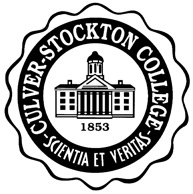Below is a summary of the abstract you submitted. Presenting author(s) is shown in bold.
If any changes need to be made, you can modify the abstract or change the authors.
You can also download a .docx version of this abstract.
If there are any problems, please email Dan at dar78@pitt.edu and he'll take care of them!
This abstract was last modified on March 17, 2023 at 1:52 p.m..

The phage Hashrod is a siphoviridae bacteriophage identified from the host Mycobacterium smegmatis Mc²155. It was extracted from a soil sample at Merrimack College in Andover, Massachusetts, and was annotated by students at Culver-Stockton College in Canton, Missouri. HashRod is a temperate phage in the A cluster, A3 subcluster, and is 50,905 base pairs in length. Auto-annotation was carried out using the DNA Master built-in databases, Glimmer and Genemark, using bioinformatic prediction models. The genomes were further annotated to determine if there were any genes in need of addition or deletion, their putative function, and start and stop codons. Annotation databases included: NCBI Blast, PhagesDB, Genemark coding potential, HHPRED, Phamerator, and Starterator. HashRod had 3 tRNAs, and 90 genes, with 36 in the forward direction, and 57 in the reverse direction. The majority of the genes in the Hashrod genome encode products of no known function, Lysin A, Lysin B, major and minor tail protein, scaffolding protein, tail terminator, capsid maturation protease, and portal protein were among the common gene products encoded. Additionally, a few membrane proteins were also identified. Bacteriophages can play an essential role in the medical field as they can be used to treat antibiotic-resistant bacterial infections. This process is called phage therapy and it is not a common treatment plan because it is in its early stages and phages are very host specific. Overall, by discovering more phages this treatment might become a more readily available and viable option.





